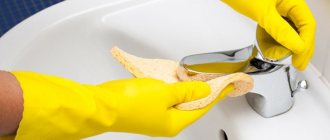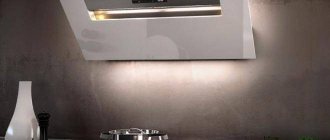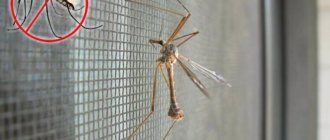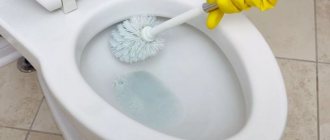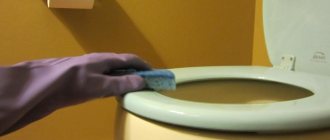Home decor is never complete without plastic. Beautiful appearance, easy cleaning, ease of use, and low cost attract consumers. The material is used for finishing ceilings and panels, manufacturing shower cabins, furniture, dishes, and household appliances.
Among the disadvantages of plastic, rapid contamination and damage by limescale are noted. To combat these problems, they resort to both traditional methods and household chemicals. It is important for housewives how to remove water deposits on plastic efficiently and safely.
The main reasons for the formation of limescale on plastic
Plastic is a relatively inexpensive material, but it quickly becomes dirty: limescale deposits appear.
Hard water, containing mineral impurities and lime, forms a deposit when settling on the surface. Its distinctive features:
- white-gray color;
- structure hardness;
- low thermal conductivity.
Constant contact with water and high humidity provoke the accumulation of calcium carbonate on plastic products. Gradually, the coating turns into water stone if you do not clean it in a timely manner.
Procedure
A large surface (for example, an acrylic bath) can also be used with citric acid:
- you need to take two bags of citric acid;
- pour them into a jar of water (2 packets per 1 liter of water) and stir thoroughly;
- Dipping a large sponge in the solution, thoroughly rub the entire surface of the bath and leave for 20 - 30 minutes;
- again soak the sponge in the solution and begin to carefully clean off the yellow deposits, thus going through the entire surface of the bathtub, rinse off the remaining deposits with running water, the bathtub will be like new.
When cleaning an acrylic bathtub, do not use substances containing abrasives, as you can scratch its surface.
It is also necessary to remember that limescale deposits should never be scraped off with sharp objects, as this can easily damage the plastic surface.
How to properly remove limescale from plastic or plastic
This step-by-step guide will tell you how to remove limescale from plastic correctly:
- Prepare the cleaning product and the necessary equipment: rags, mops (for the ceiling), foam sponges, a basin.
- Cleans away cobwebs and dust.
- Apply the solution with a soft brush or foam rubber to a small coverage area.
- Wash off any remaining product with water.
- Wipe the treated area dry.
- Repeat the process until the mineral deposits are completely removed.
It is advisable to use products without chlorine. If chlorine-containing chemicals are used, it is advisable to test the reaction of the plastic on an inconspicuous part of the product.
Preparing plastic for bleaching
Before the procedure for getting rid of yellowness, you need to prepare the surface for processing. If we are talking about a refrigerator, then remove all small parts; they will need to be soaked overnight in a special solution. The door itself and the side panels should be thoroughly cleaned of soot and grease that settle on all kitchen surfaces. Sometimes after this procedure the refrigerator becomes 1-2 shades lighter, but you shouldn’t stop there.
Use a regular soft sponge and liquid cleaners: plastic is very easy to scratch, especially if your kitchen appliances have a glossy surface. In supermarkets you can find special wet wipes for removing grease and dirt from delicate surfaces. They are ideal for processing equipment. Frequent wet cleaning will help slow down the rate of yellowing.
The following products will help whiten yellowed plastic:
- laundry soap;
- alcohol;
- vinegar;
- hydrogen peroxide;
- chlorine;
- technical soda.
Safe products and tools
To remove plaque from plastic, avoid using sharp objects, hard-bristled brushes, or metal scrapers. Tools scratch the surface and cause cracks to form. They are a source of dust that is difficult to clean. In addition, they cause yellowing and darkening of plastic products.
It is prohibited to use aggressive agents that contain:
- formic acid;
- formaldehyde;
- acetone or other solvents.
Acidic cleaning products are not suitable for removing limescale deposits: they corrode the plastic.
Safe chemistry: how to choose the right one
PolyBas is a universal product; it can also be used for cleaning floors.
Remove plaque from plastic products only with gentle liquids and gels. When using household chemicals, it is useful to make sure that there are no abrasive particles in the composition. Often, drugs that are positioned as gentle turn out to be abrasives. They will do an excellent job with limestone on metal, but will ruin the product. Proven detergents are how to effectively remove limescale from plastic. Users highlight:
- PolyBass. The liquid does not destroy plastic and acrylic surfaces. Application is carried out by spray. Removes soap scum. To clean acrylic and plastic from the limescale layer, leave the product on the surface for 15 minutes. Alcohol will remove stubborn stains and help the structure dry out quickly.
- Cillit Bang. The Silit Beng line includes several products. Getting rid of lime and rust stains, fighting stains is the task of the anti-plaque product. Apply the composition to the contaminated area, wipe the surface and after 2-5 minutes wash off with water. Active foam for shower and bath can dissolve deposits in hard-to-reach areas. The liquid, penetrating inside, does an excellent job of removing dirt, leaving shine and shine. Ideal for shower enclosures.
- Acrylan Bagi. Used to remove limescale from plastic. The product is suitable to freshen the shower stall and protect it from contamination. The advantages of the product include the elimination of rust and mold. Akrilan is equipped with a dispenser.
- Sanelit. Oxygen gel will clean simple limescale stains. Easily spreads over the coating, forming a thick foam. It has a pleasant aroma and does not irritate the nasal mucous membranes. Suitable for maintaining cleanliness.
It is important to use gloves to protect your hands from exposure to household chemicals. Also, do not forget that each manufacturer indicates instructions that must be followed.
Folk remedies: advantages and disadvantages
To remove limescale deposits, they resort to traditional methods. They are less effective than store-bought detergents, but are safer.
Gentle but effective methods for cleaning limescale deposits on plastic include:
- Citric acid. Powder (20 g) is dissolved in a glass of water. The liquid is used to treat the layering. After a quarter of an hour, remove the plaque with a sponge. Then wipe the product.
- Soda. When washing plastic pallets, the product is distributed over a damp surface. After a few hours, remove the residue with a sponge and rinse with water. The product is suitable for combating limescale on children's dishes.
- Ammonia. To wipe the plastic, dilute 1 tbsp in 1 liter of water. l. facilities. The treated surface is washed off after 5-7 minutes with hot water. It is important that the room is ventilated when performing the manipulation.
- Mustard powder + salt and soda. Helps when limescale on the product is weak.
- Soap. A concentrated solution will be needed to remove simple limescale deposits. Soapy liquid can be replaced with washing powder or dishwashing detergent. Contaminated plastic is treated with a napkin. After 10 or 15 minutes, remove the remaining mixture from the plastic coating and wash with water.
Regular table vinegar 9% has proven itself well: a cheap, effective remedy. Found in any kitchen. For example, to get rid of limestone, cover the formation with vinegar and leave for 30 minutes. Then wipe with a sponge. If the limescale has not peeled off completely, leave it for another half hour. The contamination must come off completely.
Household chemicals
Housewives have adopted a huge amount of household chemicals that perfectly fight plaque. There are also a lot of folk methods that can quickly and cheaply clean nasty plaque.
Liquid and gel products usually do not contain abrasive additives that can scratch plastic surfaces. They do not act aggressively, they remove plaque gently and easily. Most often they are used when the plastic is not in a bad state.
After using cleaning products, the plastic surface should be thoroughly rinsed with cold water and wiped dry. This cleaning method can be used once a week; limescale deposits are removed regularly, so it is easy to remove.
If the process of removing plaque is started, you have to use potent products with a paste and creamy consistency. For the time specified in the instructions, treat the surface of the plastic with the product and then wash it off, rinsing well with plenty of water.
The choice of cleaning products that will help remove limescale deposits is huge. Each housewife will be able to choose what she likes. And, of course, it is worth reading the composition of the product so as not to spoil the plastic surface. It is prohibited to use household products for plastic if it contains:
- formic acid;
- formaldehyde;
- solvent or acetone.
Aftercare of products
To ensure that caring for plastic products helps reduce limescale deposits, follow the following recommendations:
- use filters to soften water and get rid of unnecessary impurities;
- monitor the serviceability of plumbing equipment;
- After using the shower stall, it is mandatory to wipe the walls and doors with special towels;
- avoid abrasives, which lead to damage to the appearance of the product and the accumulation of dirt in scratches;
- After using a soap solution, it is advisable to treat the plastic coating with polish: the film formed is protection against microcracks.
Maintain cleanliness and remove limescale using improvised means, as well as specially designed household chemicals. Regular care of plastic will avoid problems in the form of lime deposits and will extend the service life of products.
Household chemicals
How to clean the window sill of a plastic window? Experienced housewives use universal products.
Among the variety of products, the following can be distinguished:
- Mr. Proper. A universal dirt killer in powder or thick gel form. The liquid product contains abrasive particles. It copes well with various contaminants, but afterward the surface must be thoroughly rinsed. Otherwise it will be a dust magnet.
- Cillit Bang. With a convenient and economical sprayer, which greatly facilitates the work. Quickly and effectively deals with various contaminants, including grease deposits on the kitchen window sill. But after work, the room needs to be checked, as the solution has a strong and unpleasant odor.
- Comet. This product is sold both in powder and gel form. And for cleaning window sills, the second option is suitable. Its main purpose is to combat greasy stains, so it will be indispensable for a kitchen window.
- Domestos. Detergent and bleaching agent. Works well on both grease and rust stains.
- "Pemolux". Soft abrasive powder. Gentle, but not very effective. Belongs to the budget category of goods.
- Mr. Muscle. Thick cream with cleaning and whitening effect. Shows good results when removing various contaminants.
- Froch. A line of substances for removing light stains. Suitable for use in rooms with small children, allergy sufferers and asthmatics.
- Help. A spray solution with a strong whitening effect. Indispensable for removing stubborn stains and yellowness.
- "Edelweiss". Cleaning and whitening spray.
- Sanita. A product to combat heavy dirt and grease.
- Cif. Gives abundant foam and washes away stubborn dirt well.
- Cosmofen 10. Effective, but very toxic. Use with caution, only when absolutely necessary and only with windows open. After work, it is important to ventilate the entire room. Requires thorough rinsing.
This is not a complete list of all suitable means. You can take any other one, as long as it is not destructive to plastic. Plastic surfaces are negatively affected by solvents, acetone and any acids. Therefore, when purchasing household cleaning chemicals, you must carefully read the composition and avoid products with these components.
Cast iron surfaces
If the lime deposits on the cast iron bathtub are not very old, they can be easily removed with ordinary dishwashing detergent. Apply a small amount to the surface, paying special attention to the area around the drain and the bottom of the walls, rub with a sponge, and rinse.
Serious “artillery” in the form of creamy products (Comet, Cilit, Pemolux, etc.) will help remove more serious contamination from a cast-iron enameled bathtub, as well as metal taps and hoses. But when choosing a product, pay attention to the composition, which should contain anti-corrosion inhibitors that act only on plaque without damaging the surface of the product itself.
Recommendations
The following tips from cleaning experts will help you cope better with the task:
- Before you begin bleaching, the surface must be prepared - remove dust and dirt.
- All work should be carried out wearing rubber gloves to protect your hands.
- It is necessary to consider what kind of plastic will be processed. For some types of products, special products are produced marked “for refrigerators”, “for microwaves”, etc.
- After cleaning is completed, the plastic surface should be wiped dry.
- When treating plastic against yellowing with vinegar essence, alcohol, Dimexide and other substances, you must remember that if the cleaning agent gets on areas with inscriptions, they can also be erased.
- To clean small plastic items, it is convenient to use an old toothbrush.
The most complete and useful information about methods and means of removing yellow spots and yellowness from various surfaces and products is presented in this section.
Traces from felt-tip pens, markers
It is quite difficult to remove such a stain with one specific product, since the office is created from paints of different quality and composition. But there are several traditional methods that can be used one by one until the goal is achieved:
- alcohol, which returns the marker mark to a liquid state;
- nail polish remover, but you need to use it carefully and in a ventilated room;
- toothpaste - leave it on the area for a few minutes and then remove with a dry cloth;
- hairspray - apply and let dry, and then use a soapy sponge to scrape off along with traces of the marker;
- a cleaning product for marker boards, which is easy to find in office supply stores.



